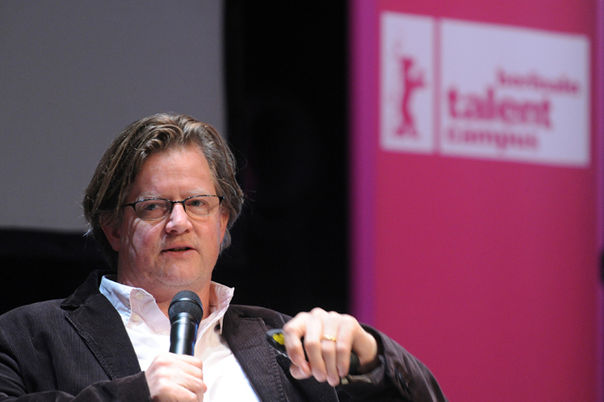Expanding Narrative Spaces
Alex McDowell talks production design with Talent Press, explaining how he draws the audience into his fictional world.

Alex McDowell
Telling a story that takes place in alternate worlds is Alex McDowell’s business. The production designer, who has worked on films such as THE TERMINAL, THE CAT IN THE HAT and FIGHT CLUB talked with Aderinsola Ajao about getting the job done.
“My job is to collaborate with the director to find the language of the world that contains the story. The look of any of these films evolves from what the story needs, how the director works and what the cinematographer wants. I never come in and say ‘this is the kind of movie I want to do,’ and I don’t believe I have a style. I’m only interested in what kind of visual context the story needs, because every story requires something different.”
Once in a while, a story comes along that offers greater than usual scope for the production designer to flex his artistic muscles. “Of course a terrific story opportunity opens up, like CHARLIE AND THE CHOCOLATE FACTORY. Nothing in the movie said ‘make everything out of spears.’ Those are the things I’m interested in and I think that from film to film, I try very hard to do something different. I try and choose different genres. I guess I just try not to repeat myself.”
Though McDowell is not averse to CGI, it seems that he may have a preference for constructing real sets. “It’s the same thing actually, in design terms. I try to design a holistic world like the entire space of the movie and then divide it up according to what is appropriate, correct, cost-efficient and practical. If it’s CG, it’s CG because you just couldn’t possibly build [a set] as big as it needs to be. We explore that a lot at the beginning of a film. I love the possibilities of CG; there’s something really interesting about the level of control you have. But there’s also something really stimulating about the accidents that occur when it’s a real space. I actually love working on locations a lot and I think locations give you back what you couldn’t ever even think of designing. But as soon as you move into a fully-designed space, whether it’s a fully-designed set on stage or a virtual set, the workload of your imagination increases exponentially.”
Finally, what does Alex McDowell consider the primary function of a production designer? “The simple answer is that you want the audience to enter the space. You want them to be immersed in this story, and you have to think through the logic of the interaction between the story and the environment. I think that’s the primary function for us. What does it take to not take the audience out of the story?”


301 Moved Permanently